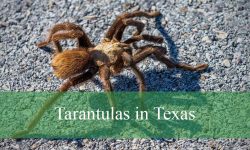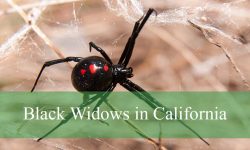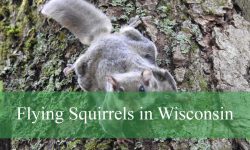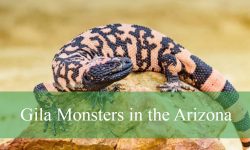Groundhogs—often called woodchucks—are one of the most recognizable mammals living across New Jersey’s forests, fields, farmlands, and suburban neighborhoods. Despite their familiar appearance, these stout-bodied rodents possess a surprising range of behaviors, physiological adaptations, and ecological roles that many people overlook. New Jersey’s blend of rural and suburban landscapes provides the perfect mixture of open feeding areas and wooded shelter zones, allowing groundhogs to thrive in nearly every county from the Pine Barrens to the Delaware River corridor.
While they are frequently noticed waddling across lawns, chewing garden plants, or standing upright to scan for predators, groundhogs are far more complex than their everyday reputation suggests. Their social signals, underground engineering skills, winter hibernation patterns, feeding strategies, and territorial behaviors reveal an animal uniquely adapted to New Jersey’s temperature swings and mixed land-use patterns. They interact closely with soil, vegetation, predators, and even human-modified environments, making them an important yet often misunderstood component of the state’s ecological tapestry.
Below are twelve surprising characteristics of groundhogs in New Jersey that reveal just how remarkable this common mammal truly is.
1. Groundhogs Are Master Excavators Who Engineer Complex Burrow Systems
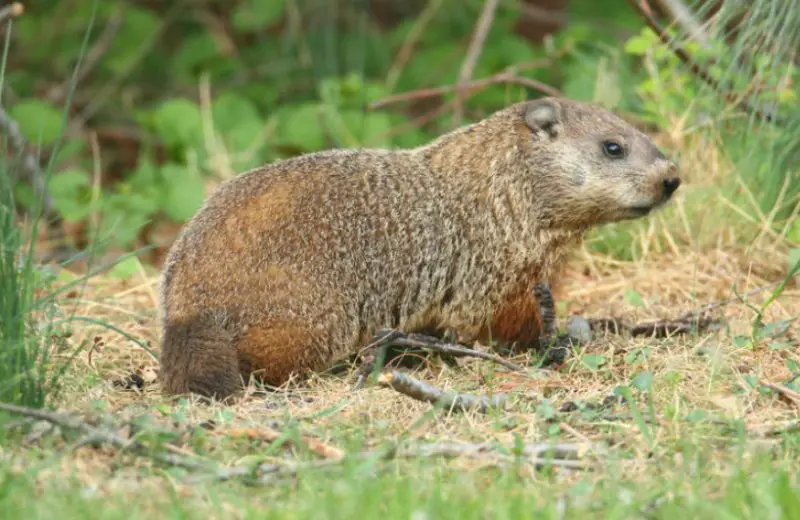
Their Burrows Extend Far Longer Than Most People Realize
A groundhog’s burrow may stretch 30 to 50 feet underground, containing multiple chambers for sleeping, nesting, and hiding. These tunnels branch off in several directions, providing escape routes that help them evade predators.
New Jersey’s soft, loamy soils make digging particularly efficient.
Burrows offer stable temperatures year-round, allowing groundhogs to survive heat, cold, and storms.
They Maintain Multiple Burrows Across Their Territory
It is common for a groundhog to keep more than one active burrow. They rotate between entrances depending on food availability, predator presence, and seasonal needs.
Secondary burrows often serve as temporary shelters.
This network of burrows helps them avoid becoming predictable to predators.
Their Digging Influences Soil Health
By aerating the soil and mixing organic material into deeper layers, groundhogs indirectly benefit plant communities. Their digging also creates microhabitats for insects, rabbits, and other small mammals.
These effects make them minor ecosystem engineers.
Their underground architecture supports greater biodiversity around their habitat.
2. Groundhogs in New Jersey Are True Hibernators
They Enter Deep Hibernation Through the Winter
Unlike many animals labeled as “hibernators,” groundhogs undergo true hibernation. Their heart rate drops from about 80 beats per minute to as low as 5. Their body temperature falls dramatically, and metabolic activity nearly halts.
This deep dormancy allows them to survive New Jersey’s frigid winters.
Their hibernation can last several months depending on temperature cycles.
They Live Entirely Off Fat Reserves
Before hibernation, groundhogs spend late summer and early fall feeding heavily on vegetation to build thick fat layers. These stored reserves sustain them through months without food or water.
Their ability to accumulate fat quickly is crucial for winter survival.
This seasonal rhythm reflects strong internal biological timing.
Weather Fluctuations Impact Their Hibernation Length
Warmer winters or unexpected thaw periods may shorten or interrupt hibernation cycles. New Jersey’s shifting climate sometimes causes groundhogs to emerge briefly and return underground when temperatures drop again.
These interruptions can affect body condition and future breeding success.
Their winter patterns depend heavily on local temperatures.
3. Groundhogs Communicate With an Unexpected Range of Sounds
They Produce High-Pitched Whistles to Signal Danger
Groundhogs emit sharp whistles when alarmed, alerting others in the area to potential threats. These calls carry long distances across open landscapes.
Such whistles are one of their most recognizable warning signals.
Communication helps them coordinate escape into burrows.
They Use Low Grunts and Tooth Clicking in Close Interactions
Groundhogs communicate using subtle grunts, squeaks, and tooth-clacking behaviors when interacting with mates or rivals. These sounds often go unnoticed by humans.
Much of their communication occurs at close range.
These quiet signals help maintain social spacing and reduce conflict.
They Rely on Scent Marking as Well
Groundhogs use scent glands to mark territory, communicate reproductive readiness, and identify individuals. This chemical communication plays a major role in how they navigate their environment.
Their scent cues support social organization in overlapping habitats.
These signals are critical during mating season.
4. Groundhogs Stand Upright Not Just to Look Cute—It’s a Survival Tool
Upright Posture Gives Them a 360-Degree View
Groundhogs frequently rise on their hind legs to check for predators. This elevated posture allows them to scan fields, gardens, and meadows efficiently.
This behavior is often mistaken for curiosity, but it’s primarily defensive.
The posture helps them detect threats from foxes, coyotes, dogs, and hawks.
It Helps Them Assess Wind Direction
Standing upright allows groundhogs to lift their noses into higher air currents. This helps them catch scent cues carried by wind—an important method for detecting predators.
Scent detection complements their vision.
Their sensory processing supports quick decision-making.
They Use Upright Posture During Aggressive Encounters
Males stand high when confronting rivals, making themselves look larger. This intimidation tactic helps prevent fights from escalating.
Postural communication reduces injury risk.
Their displays serve as a form of social negotiation.
5. Groundhogs Have Powerful Teeth That Grow Continuously
Their Incisors Grow About a Sixteenth of an Inch per Week
Groundhog teeth never stop growing. Constant chewing on stems, bark, and grasses keeps them at proper length.
This continuous growth is necessary for plant-based diets.
Their chewing behavior prevents dental problems.
Their Bite Strength Is Surprisingly High
Groundhogs can generate strong pressure with their incisors. In rare defensive situations, this bite strength can deter predators.
Their teeth are built for durability and efficiency.
This adaptation supports both feeding and defense.
They Use Their Teeth to Cut Through Vegetation Quickly
Efficient feeding is essential for building fat before hibernation. Groundhogs clip large quantities of vegetation rapidly.
Their incisors are precision tools evolved for herbivory.
Chewing plays a major role in shaping their feeding patterns.
6. Groundhogs Shape New Jersey’s Landscapes Through Selective Feeding
They Influence Plant Composition in Meadows
Groundhogs prefer clover, alfalfa, dandelions, and tender grasses. By selectively grazing, they indirectly shape the plant communities around their burrow systems.
Their feeding behavior creates patches of high plant turnover.
This selective pressure impacts meadow ecology.
They Are Opportunistic Feeders
While herbivores, groundhogs consume a broad range of vegetation including fruits, garden crops, tree bark, and occasionally insects.
Their diet shifts with seasonal availability.
This adaptability makes them successful across New Jersey’s varied habitats.
Their Foraging Patterns Follow Edges of Forest and Field
Groundhogs thrive along ecotones—transitional areas between open and wooded habitat. These edges provide abundant food and quick escape routes.
Edge habitats across New Jersey are ideal for them.
Their distribution reflects this landscape preference.
7. Groundhogs Swim Surprisingly Well
Their Body Structure Supports Natural Buoyancy
Despite appearing heavy, groundhogs float easily. Their dense fur traps air, increasing buoyancy as they paddle across ponds, marsh edges, and drainage basins.
Swimming helps them escape predators.
Their aquatic ability is an overlooked survival trait.
They Use Water to Travel Between Feeding Sites
Groundhogs sometimes cross creeks or flooded areas to reach new vegetation patches. Water barriers don’t limit their movement as much as many people assume.
Their swimming capability expands their territory options.
This behavior is common in river valleys and floodplains.
Young Groundhogs Learn to Swim Early
Juvenile groundhogs practice swimming in shallow water under parental supervision. Early learning improves survival skills.
These behaviors are part of their natural development.
Swimming plays a larger role in their ecology than expected.
8. Groundhogs Exhibit Territorial Behavior During Breeding Season
Males Defend Areas With Rich Vegetation and Safe Burrows
During spring, males maintain exclusive territories covering several acres. They patrol boundaries and deter rival groundhogs through displays, vocalizations, and scent marking.
Territorial success influences mating opportunities.
Strong territorial behavior ensures resource access.
Territories Overlap Only Slightly
Unlike social mammals, groundhogs maintain highly individualized home ranges. Overlap is minimal except during breeding season, when females briefly interact with males.
This isolation reduces competition for food.
Territorial spacing helps maintain population stability.
Females Choose Burrows Carefully for Raising Young
Maternal burrows are deeper and more secure. Females seek areas with abundant vegetation and minimal disturbance.
Burrow choice directly affects juvenile survival.
Maternal care revolves around shelter quality.
9. They Are Far More Intelligent Than Their Reputation Suggests
They Learn to Navigate Human Environments
Groundhogs adapt quickly to suburban conditions—learning to avoid traps, time their movements around human activity, and identify safe routes between feeding sites.
Their intelligence supports thriving in modified landscapes.
Learning behavior helps them avoid threats.
They Remember Food-Rich Locations
Groundhogs develop spatial maps of gardens, orchards, and meadows. They recall which plants grow where and return seasonally.
Memory-based foraging increases efficiency.
This internal mapping demonstrates advanced cognitive ability.
They Detect Human Patterns
Groundhogs often adjust activity based on household schedules, becoming active when areas are less disturbed.
This behavioral flexibility highlights their awareness.
They are excellent observers of their surroundings.
10. Groundhogs Reproduce With a Highly Timed Seasonal Cycle
Mating Occurs Shortly After Winter Emergence
Breeding begins in early spring, often within weeks of hibernation ending. The timing ensures that young are born when vegetation is abundant.
This seasonal synchronization benefits mother and offspring.
Breeding windows are narrow but efficient.
Groundhog Litters Are Small but Well-Cared For
Females give birth to 2–6 hairless pups. For the first weeks, young remain underground, nourished solely by milk.
Maternal investment is intense during early growth.
This care structure enhances juvenile survival.
Young Groundhogs Disperse Early
By midsummer, young groundhogs leave the natal burrow to establish their own territories.
Dispersal reduces overcrowding and competition.
This movement helps maintain population spacing.
11. Groundhogs Face a Long List of Predators in New Jersey
Coyotes, Foxes, and Domestic Dogs Are Key Threats
These predators frequently hunt groundhogs, especially juveniles. Groundhogs rely on early detection and rapid retreat into burrows for protection.
Predation shapes their vigilance and posture.
Survival depends on awareness and burrow access.
Birds of Prey Also Target Young Groundhogs
Hawks, eagles, and owls may catch smaller individuals. Open fields increase exposure to aerial predators.
Groundhogs prefer burrow entrances near escape cover.
Their cautious movements reflect constant predator pressure.
Human Activity Creates Additional Risks
Vehicles, yard equipment, and habitat fragmentation pose dangers. Groundhogs often cross roads while foraging or dispersing.
Human–wildlife overlap increases accidental mortality.
These risks are common in suburban New Jersey.
12. Groundhogs Play an Important Ecological Role in New Jersey
Their Burrows Provide Shelter for Other Wildlife
Many animals—including rabbits, snakes, skunks, and foxes—use abandoned groundhog burrows for shelter and nesting.
These burrows support diverse wildlife communities.
Their engineering benefits ecosystems far beyond their own species.
They Contribute to Soil Turnover
Constant digging helps mix soil layers and incorporate organic materials. This turnover enhances soil fertility in meadows and forest edges.
Groundhogs indirectly support healthy plant communities.
Their underground activity has long-lasting ecological effects.
They Influence Vegetation Through Grazing
By feeding selectively, groundhogs shape plant structure and diversity. Their grazing habits maintain open patches within dense vegetation.
These patches create habitat variation across landscapes.
Their ecological footprint is often underestimated.
FAQs About Groundhogs in New Jersey
Are groundhogs aggressive toward humans?
No, they avoid confrontation unless cornered.
Do groundhogs carry diseases?
They can carry parasites but generally pose low risk when left undisturbed.
Are groundhogs active all year?
No. They hibernate in winter.
What do groundhogs eat most?
Grasses, clover, garden vegetables, fruit, and bark.
Do groundhogs climb trees?
Yes, though infrequently.
How big are groundhog burrows?
Burrows may reach 30–50 feet with multiple chambers.
Do groundhogs damage property?
They can damage gardens and digging may affect structures.
Where are groundhogs found in New Jersey?
Statewide, especially in fields, forest edges, and suburban areas.
Conclusion
Groundhogs in New Jersey are far more remarkable than their everyday appearance suggests. Their engineering abilities, hibernation physiology, complex communication, ecological influence, and adaptability to human environments reveal a mammal perfectly suited to the state’s diverse landscapes.
These twelve surprising characteristics highlight the depth of behavior and biology hidden beneath the surface of a species many consider ordinary. Understanding their ecological role helps foster coexistence with one of New Jersey’s most iconic and quietly influential wildlife residents.


